The Best Running Gels And How To Use Them In Your Training
What are they, why do you need them and which energy gels taste the best?

1. The Quick List ↴
2. Best Overall: SiS GO Isotonic Energy
3. Best-tasting Gel: Torq Energy Gel
4. Choice Of Elites: Maurten Gel 100 and Gel 160
5. Best High-carb Gel: SiS Beta Fuel
6. Best For London Marathon runners: Lucozade Sport Energy Gel
7. Best Refillable Gel: KMC NRG Gel
8. Best With Natural Ingredients: Veloforte Energy Gel
9. Best Gel With Caffeine: SiS Beta Fuel Nootropics
10. Running Gels Explained
11. Q&A
Running becomes a very different proposition when you’re doing it for longer than 90 minutes. Instead of stepping out of the door with the bare essentials and the freedom to run wherever you like, you need to plan your nutrition and tailor your route to include stops for refueling.
Planning your nutrition for before, during and after any long run is key to getting you through it in the speediest and most enjoyable manner possible. That’s especially true for races, where you might well be shooting for a PR. It’s vital to plan your nutrition for any road race of half-marathon distance or more, and even for shorter trail races if they’re going to last longer than 90 minutes.
In the past people endured long events just by swigging water and eating a chocolate bar at the halfway mark. Nowadays even amateur runners can enjoy the benefits of professional-level products, and running gels are the go-to option for many people keen on getting through long runs in the most efficient manner possible.
How I Test Running Gels
You can trust Coach
There’s only one way to test running gels, and that’s to consume them before and during runs. I usually run 50-70 miles a week and race regularly, and use gels to help fuel my weekly long runs and half marathon and marathon races, as well as some hard, short training sessions.
I’ve tested a wide range of gels from different brands, and while they all get carbs into the body effectively, there are certainly differences between them. While choosing the best running gels is a little subjective, I’ve picked out a variety of options below and am confident there’s something there for every runner.
The Quick List
You’ll find detailed write-ups of many gels I’ve tested below, but here’s a quick run-down of the best options available. Click on any gel in The Quick List to jump to the more detailed review.
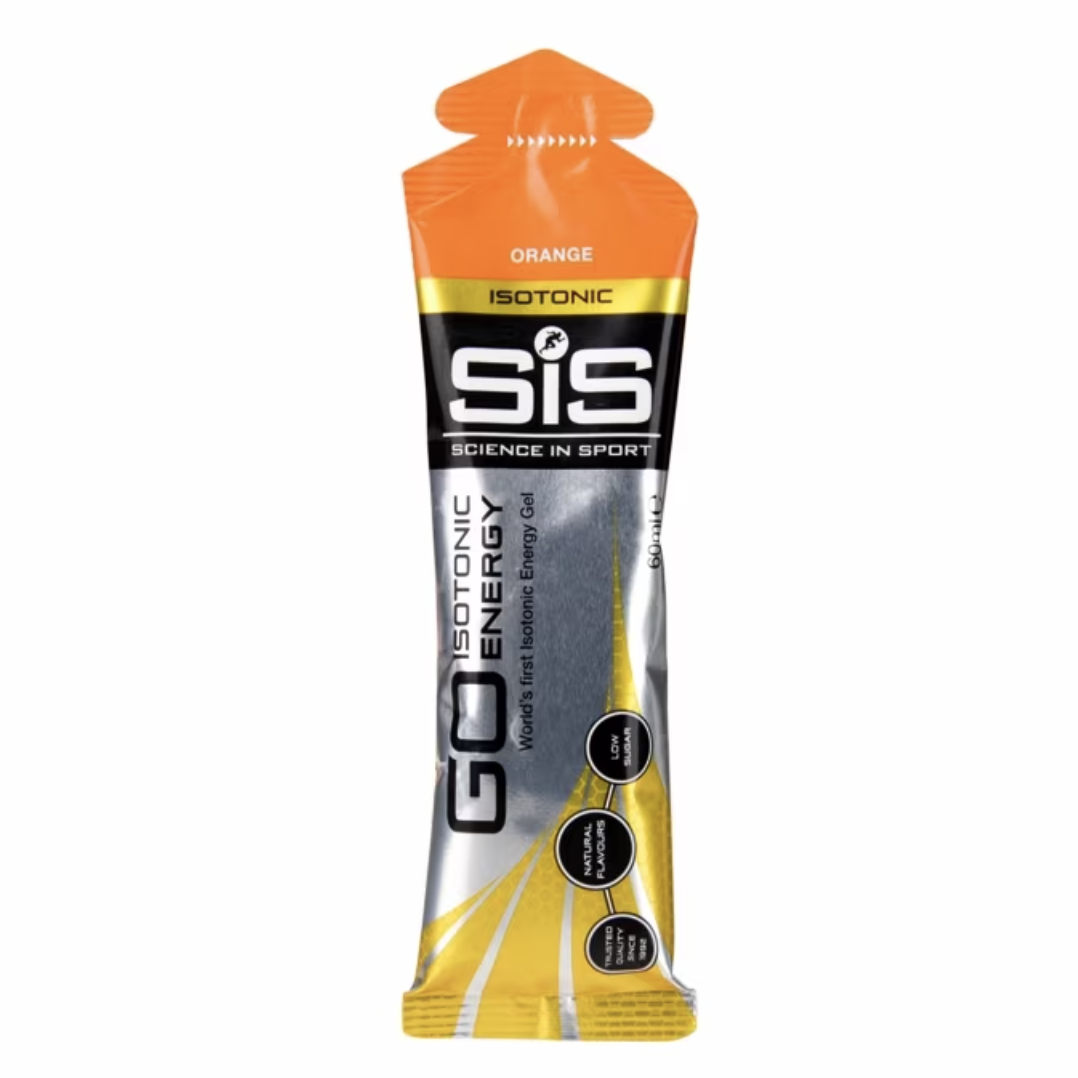
Best overall
SiS’s Go Isotonic gels are easy to get down without water, come in a wide range of flavors and are widely available in shops and online. There are gels with added caffeine and electrolytes in the range too, and the price is reasonable.
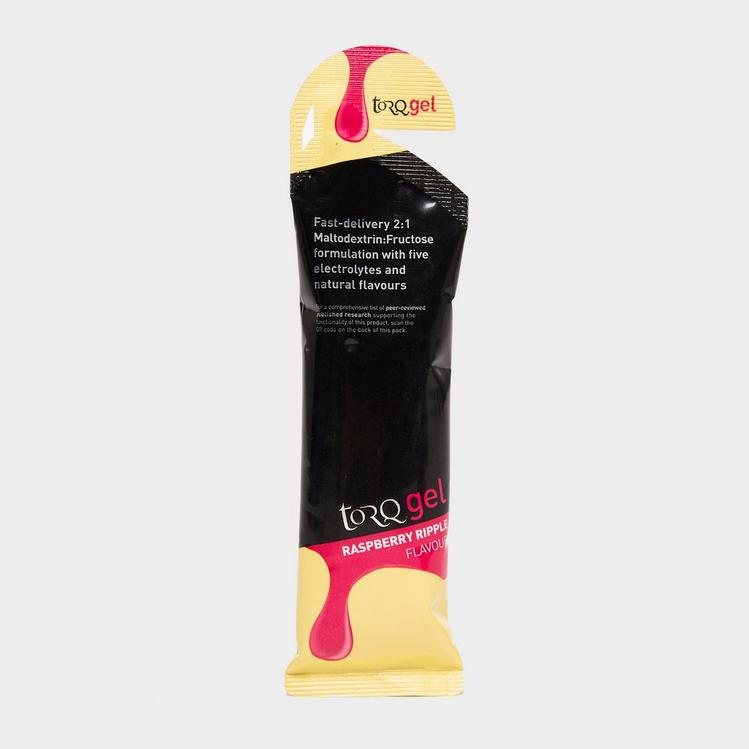
Best-tasting gel
If you’re simply going on flavor Torq’s gels are my favorites, with a range based around classic desserts and cakes, so you can sip on a cherry bakewell or apple crumble gel mid-run. The gels are also small and contain 30g of carbs.
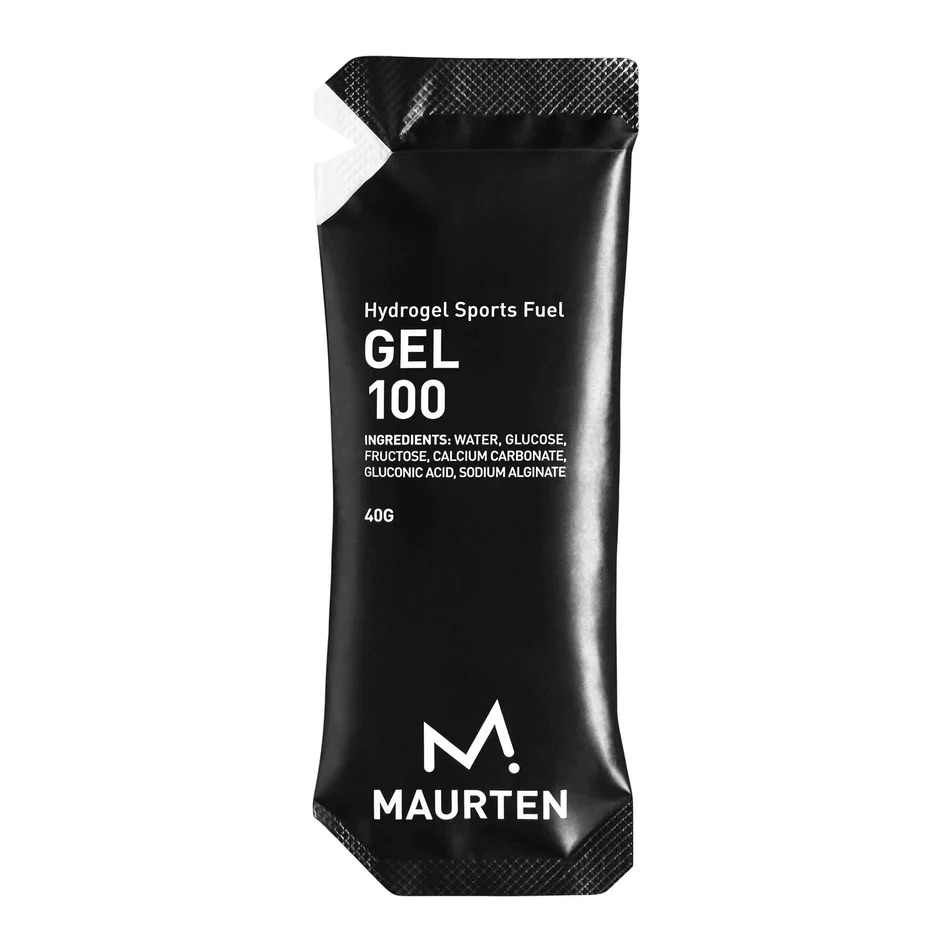
Choice of elites
The choice of elites, and mine. I’ve found Maurten’s hydrogels are less likely to cause me stomach issues during marathons than other options. These gels are ideal for performance-focused runners aiming to consume a lot of carbs.
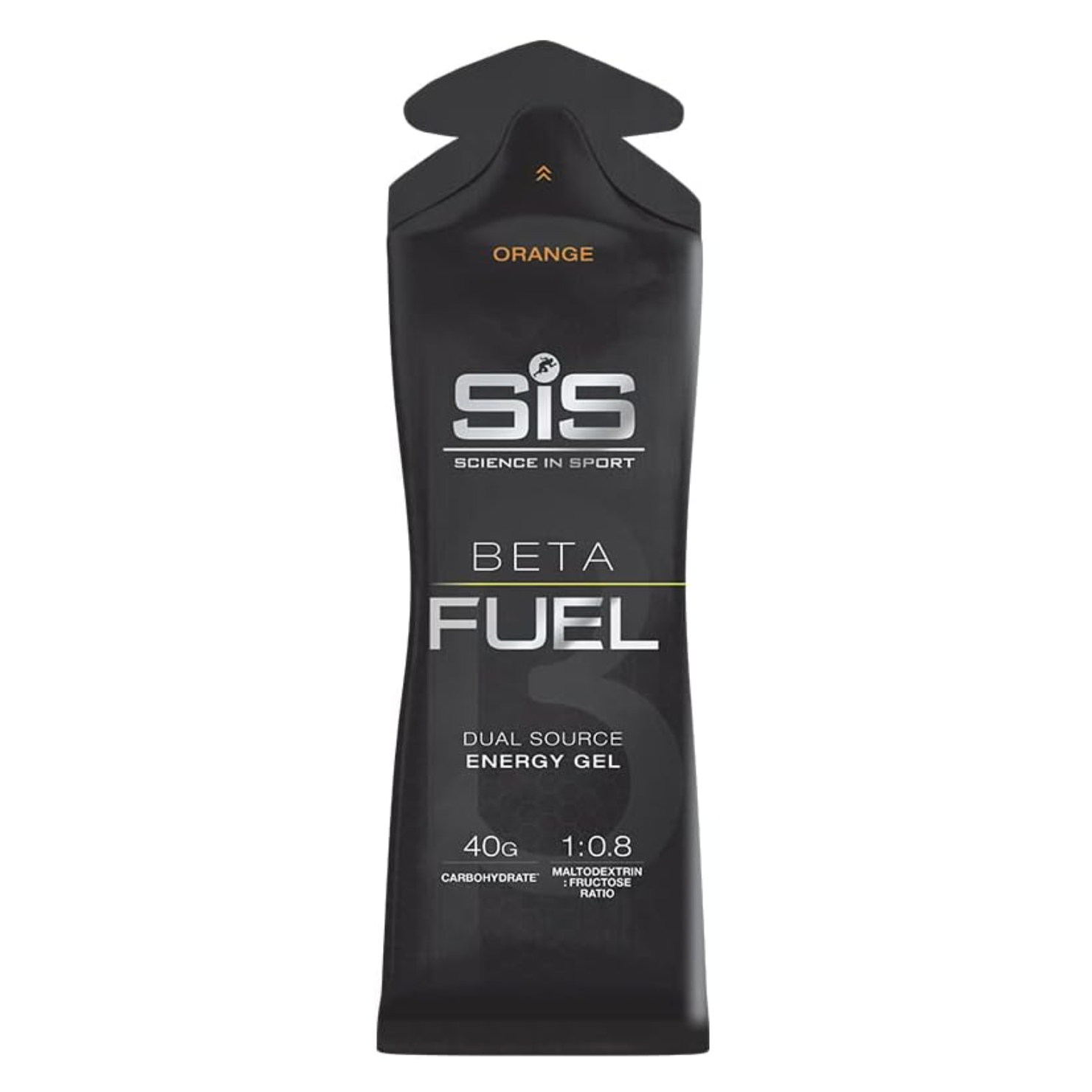
Best high-carb gel
Each Beta Fuel gel contains 40g of carbs, in contrast to the 20-30g in most gels, which means it’s easier to carry a lot of carbs with you during long events. Just be careful to sip, rather than chug, this gel—it’s a lot of carbs to hit the stomach at once.
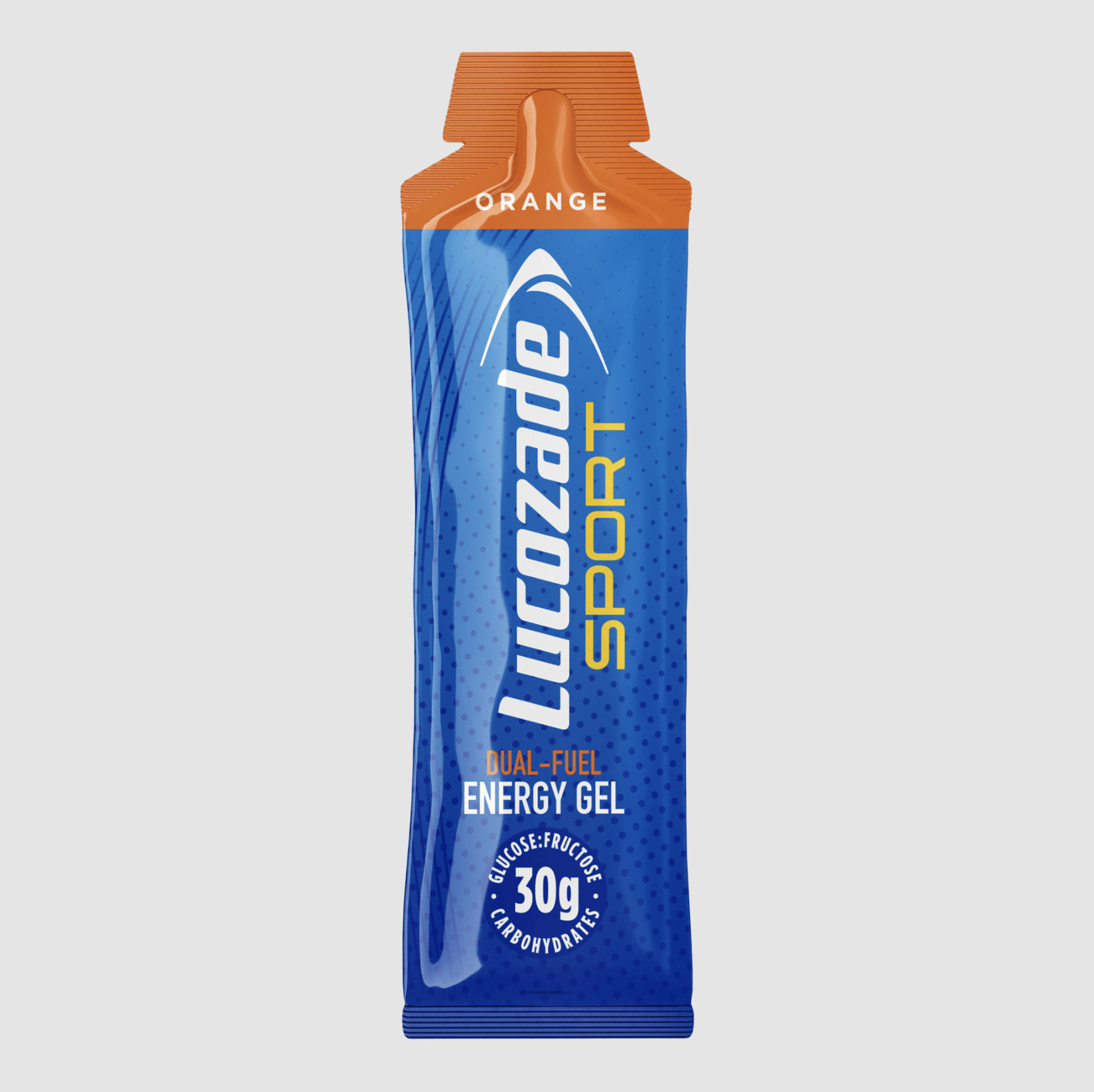
Best for London Marathon runners
The Lucozade Sport gel is pretty standard, but for London Marathon runners it’s a good choice, because you can pick the gels up at two points on the course, reducing the amount you need to carry.
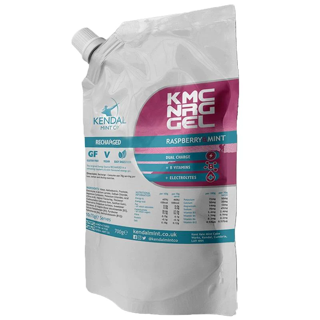
Best refillable gel
You can buy a large pouch of the KMC NRG Gel and then use it to fill up reusable soft flasks to carry on race day. This allows you to fine-tune the amount of carbs you carry, and is less wasteful than single-serve gels.
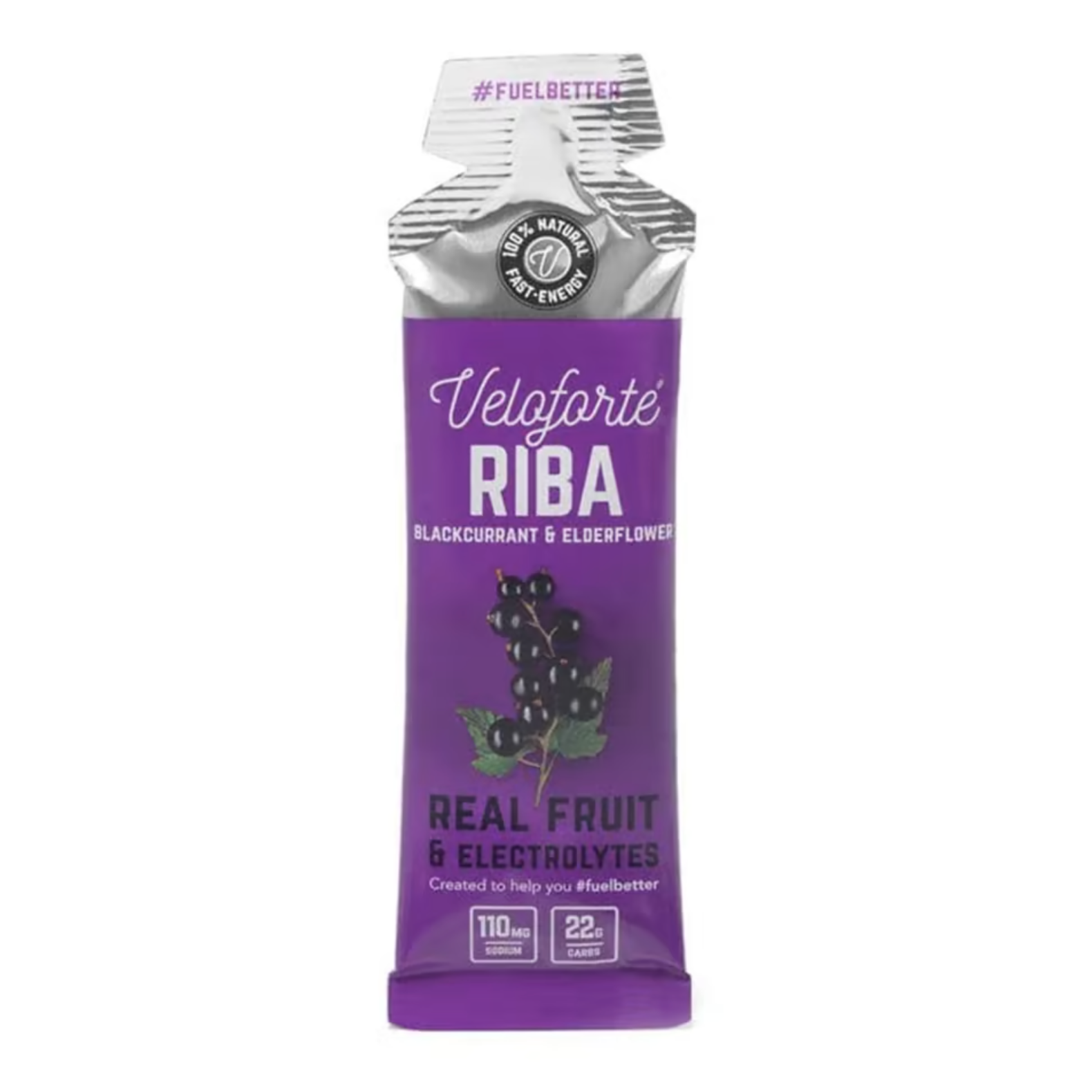
Best with natural ingredients
Veloforte’s gels have adventurous flavors and use natural ingredients, which some runners find preferable either for dietary reasons or because their stomach copes better with them.
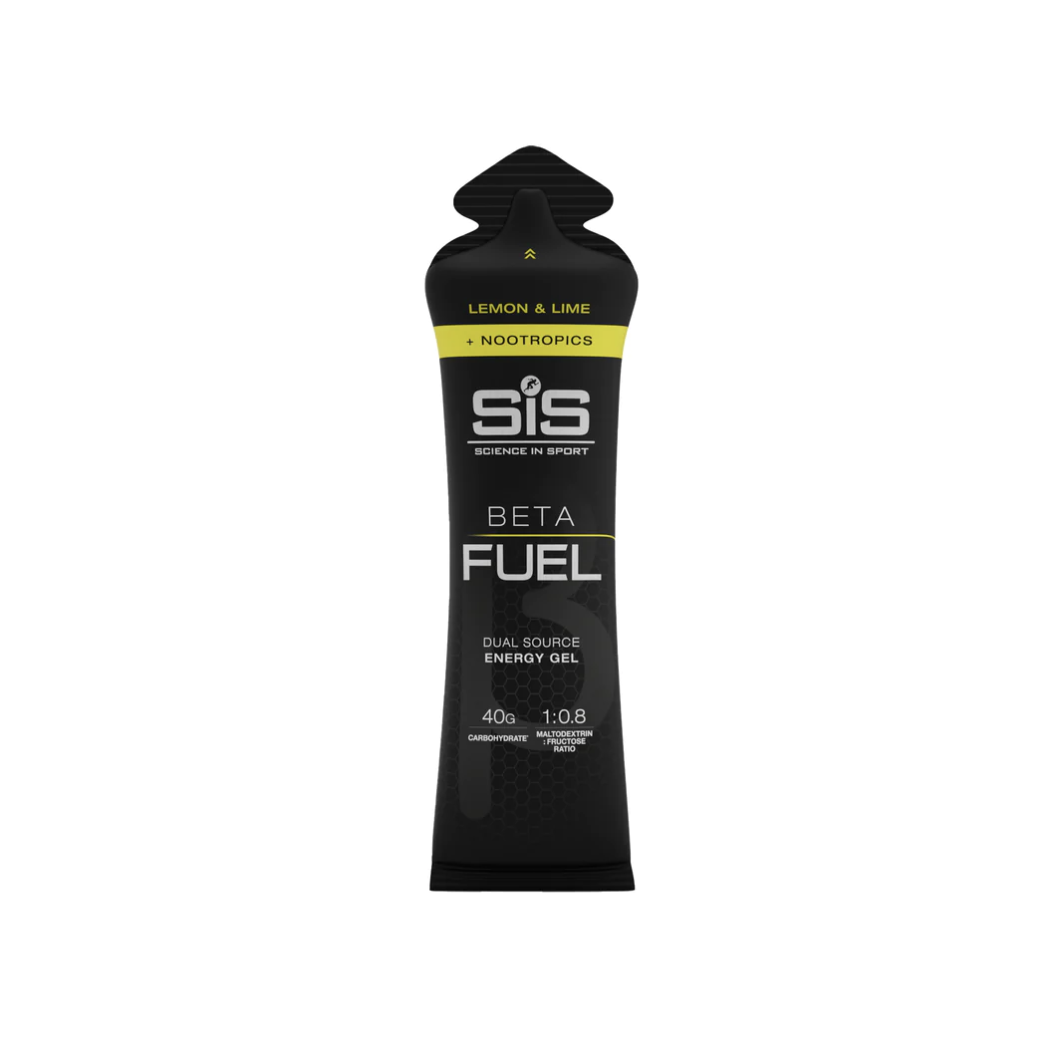
Best gel with caffeine
The Nootropics version of SiS’s Beta Fuel gel is essentially rocket fuel for your runs, containing 200mg of caffeine, 40g of carbs plus other nootropics to boost mental performance. It takes some getting used to, but this gel is a great option for your longest runs.
The Best Running Gels
Best Overall
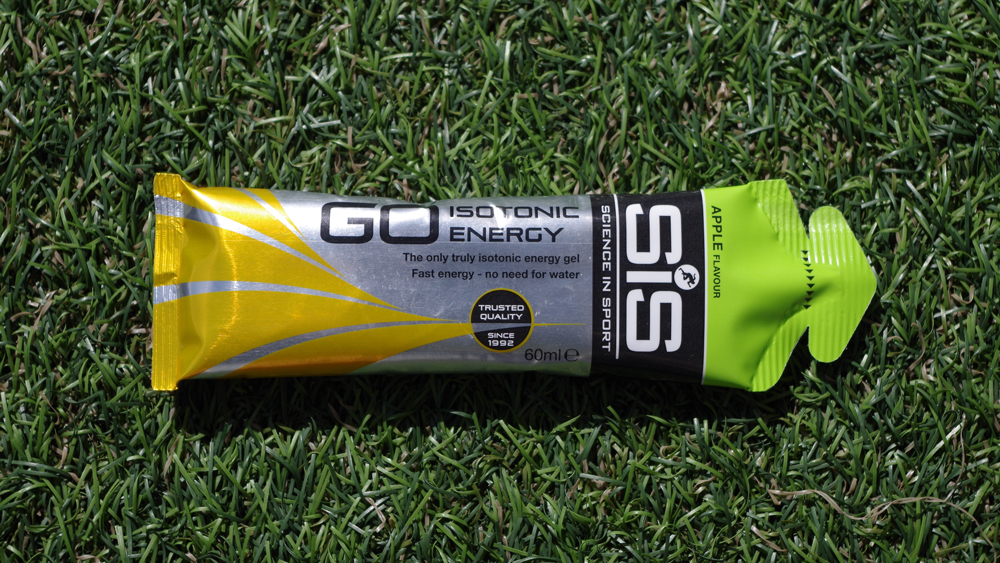
1. SiS GO Isotonic Energy
Specifications
Reasons to buy
Reasons to avoid
SiS’s gels are easy to find in shops and online, come in a wide range of flavors and are pretty cheap, especially if you buy in bulk. They contain 22g of carbs and there are also variations that have added electrolytes or caffeine. The isotonic style means you can take them without water and I’ve found them among the easiest gels to stomach—I’ve successfully used them in three marathons.
I would say it’s still best to have water to hand to wash them down, though, and one downside of the isotonic design is that the gels are bulkier than others, so carrying enough for a marathon requires a big running belt.
Taste test: SiS has a huge range of flavors, including loads of caffeinated options and some with added electrolytes. The texture is somehow both watery and lumpy, which sounds worse than it is, and they slip down the throat with minimal fuss. The flavors are less sharp than in the carb-only gels, so your teeth won’t start tingling from the sugar hit.
Best-tasting Gel
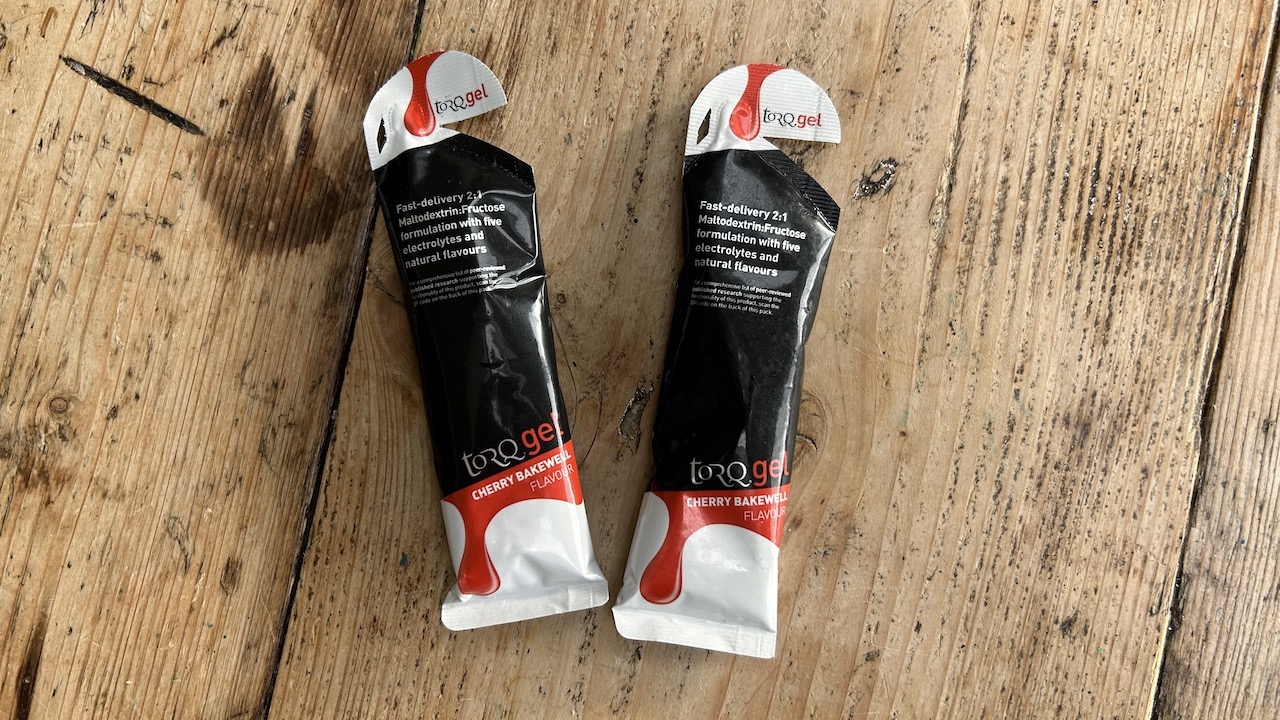
2. Torq Energy Gel
Specifications
Reasons to buy
Reasons to avoid
While it’s the taste of these gels that puts them in a different league, the underlying numbers are also excellent. Each 45g gel contains 30g of carbohydrates in a 2:1 maltodextrin-to-fructose ratio, which allows you to absorb more carbs per hour, and there are also five electrolytes thrown into the mix to help replace what you lose in sweat.
Taste test: Torq has absolutely smashed it on the flavor front, with a range of appealing options that means you’re not going to get sick of the gels even on a long run when you’re consuming several. Along with perennial dessert favorites like cherry bakewell, apple crumble and lemon drizzle, there are caffeinated options such as caramel latte and banoffee. I’ve yet to try one I don’t like—black cherry yogurt is another excellent option—and the gels are easy to get down while running, though I’d recommend having water with them.
Choice Of Elites
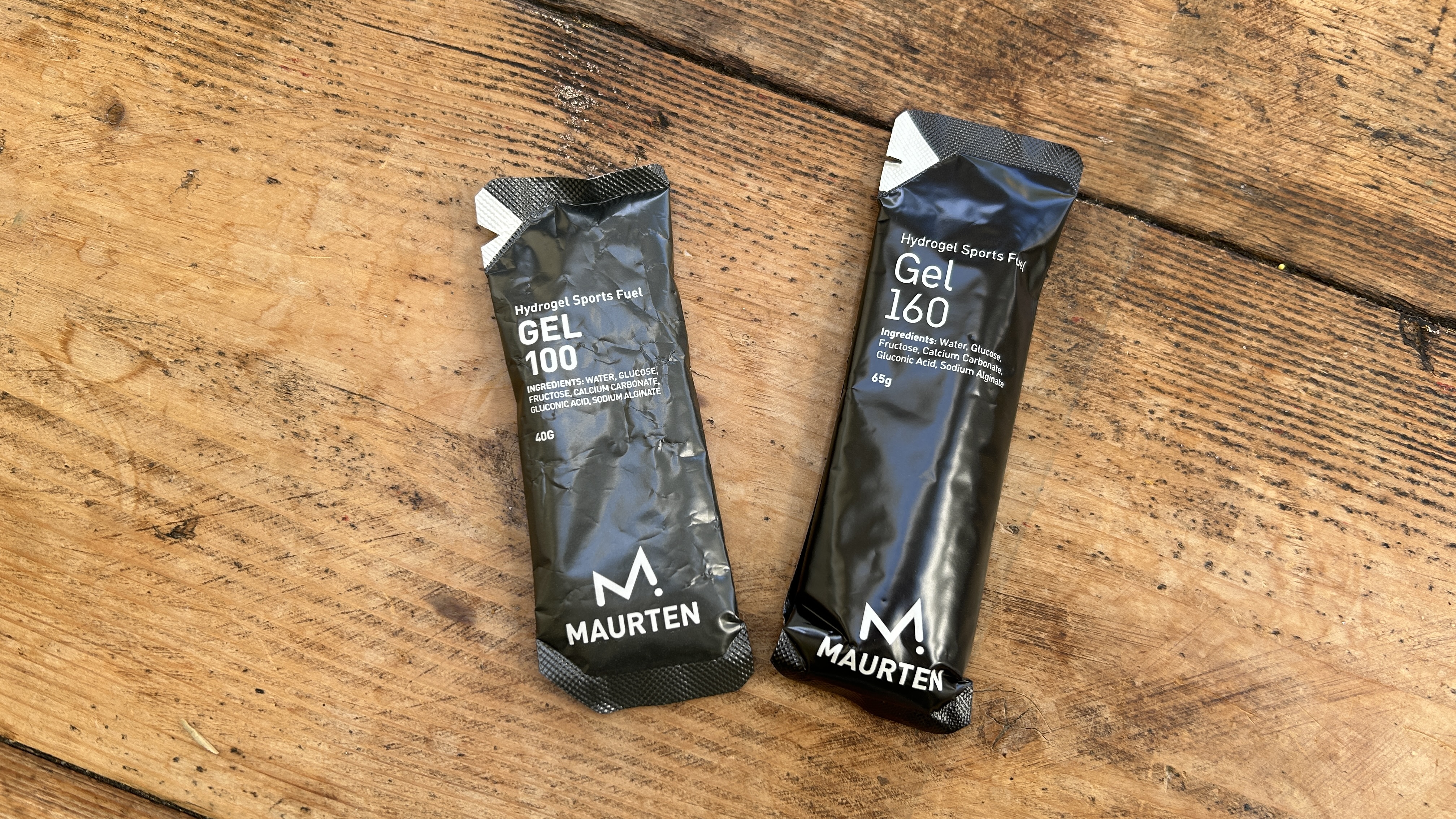
3. Maurten Gel 100 and Gel 160
Specifications
Reasons to buy
Reasons to avoid
Maurten’s gels and sports drinks have become a common sight in the hands of elite runners like Eliud Kipchoge during marathons, and the gel in particular is a little different from everything else on this list. Part of that is the strange consistency—it’s firm enough to bite off chunks, rather than sipping like a syrup—but the key difference is that the hydrogel poses less risk of upsetting your stomach than a standard gel because it passes straight through and is absorbed in the small intestine instead.
If you avoid using gels because of past gastrointestinal problems, Maurten’s gels are worth trying. I have not experienced significant stomach issues while using Maurten’s products, which have been my go-to for my past few marathons.
There are now two gels in Maurten’s range: Both are the same stuff but in different amounts. The 40g Gel 100 contains 25g of carbs, while the 65g Gel 160 contains 40g. The latter is handy for hitting high carb intake targets during long events, and I’ve found the Gel 160 easier to get down without stomach problems than other brands’ 40g carb gels I’ve tried.
Taste test: The texture will divide opinion, but I quite enjoy biting off a bit of the gel and letting it dissolve a little in my mouth before swallowing. For one thing, this removes the risk of getting unpleasantly sticky liquid on your hands during a run. The gels don’t really have much of a taste, just a vague sweetness, and they don’t need to be washed down with water to clear your mouth of any residue.
Best High-carb Gel
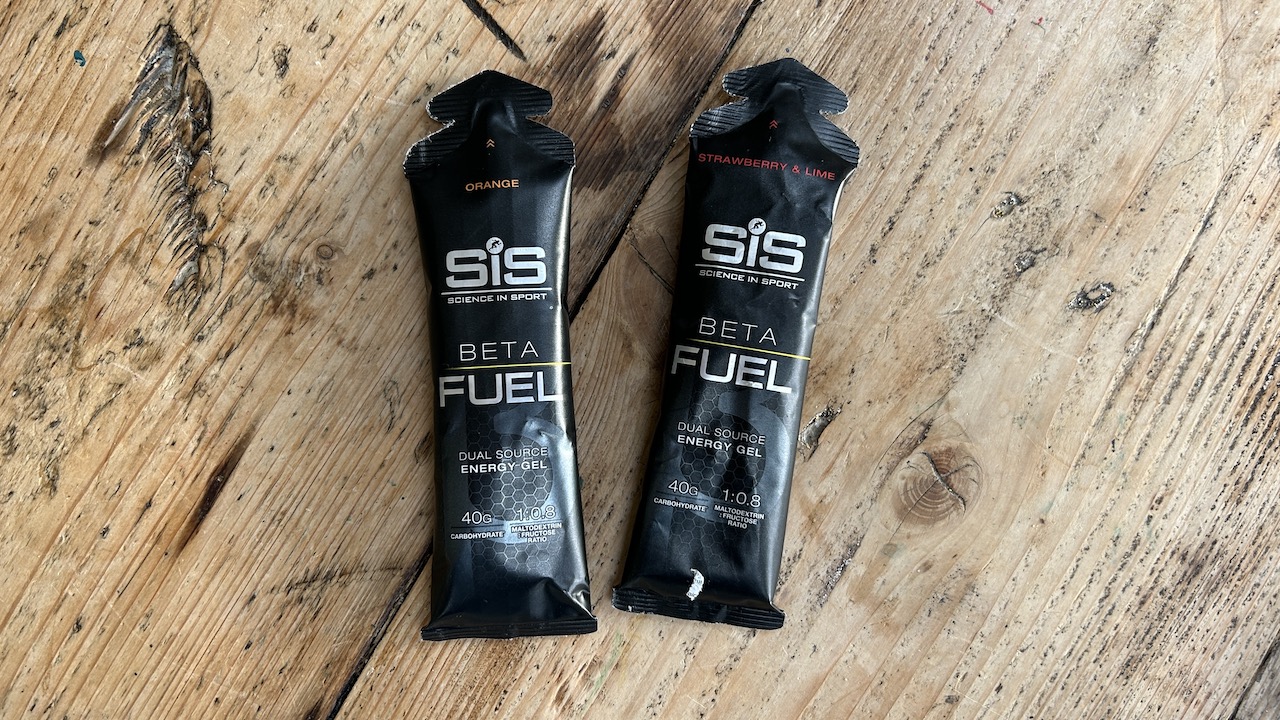
4. SiS Beta Fuel
Specifications
Reasons to buy
Reasons to avoid
These gels are a convenient way to carry a lot of carbs. Each of them contains 40g of carbs per 60ml serving—almost double the standard 22g you get from most brands. The carbs are provided in a 1:0.8 ratio of maltodextrin to fructose, rather than the standard 2:1, and SiS says this makes it easy for the body to absorb the carbs in the gel. Along with the standard Beta Fuel gel there is a nootropic version, which contains 200mg caffeine, plus other ingredients to help you stay mentally sharp during your endurance events.
Taste test: The gel comes in two flavors: There’s orange, and there’s strawberry and lime, which is particularly tasty. It’s not too sweet and the fluid texture slips down easily on the move even if you don’t have water to hand. I found you have to be careful not to down the 40g of carbs in one go, which didn’t do my stomach any favors, and instead sip the gel over several minutes for the best results.
Best For London Marathon Runners
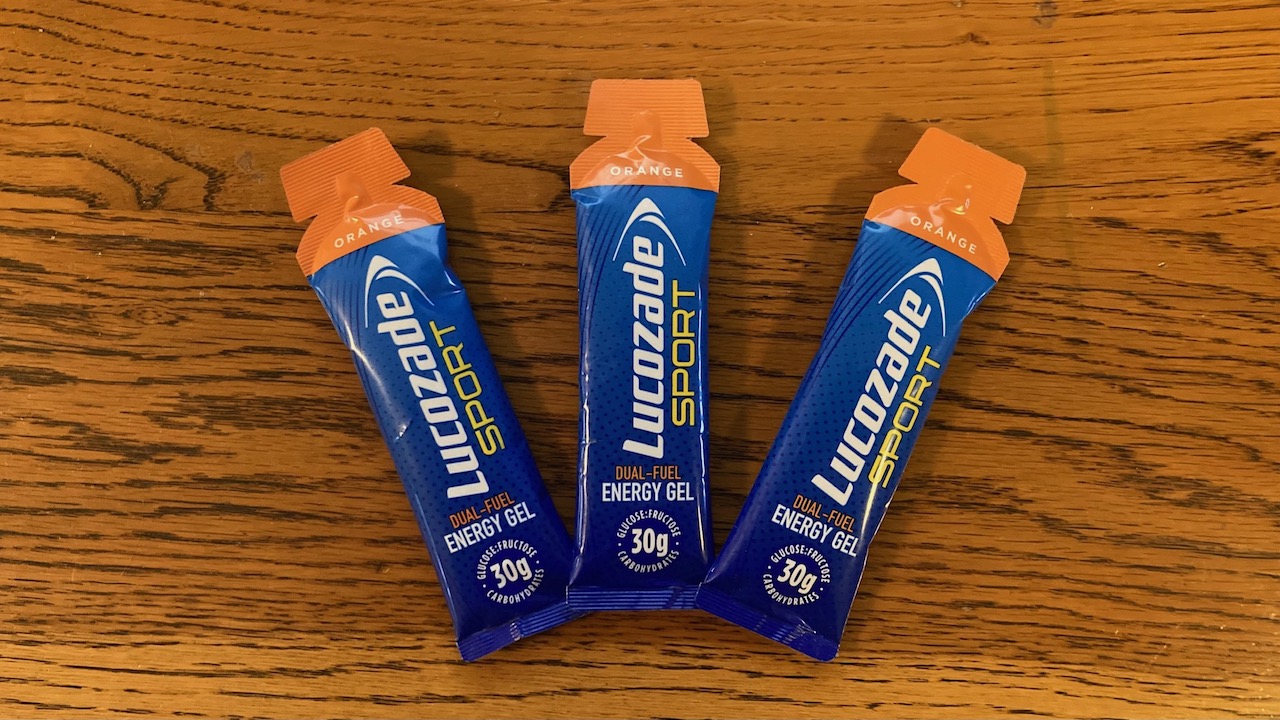
5. Lucozade Sport Energy Gel
Specifications
Reasons to buy
Reasons to avoid
There’s nothing particularly special about the Lucozade Sport gels, which provide 30g of carbs in a serving, sourcing those carbs from a mix of fructose and glucose to maximize the amount you can absorb. However, they do have one unique feature, which is that they are the only gels handed out to runners on the London Marathon course. You can pick one (or more) up at around miles 14 and 19, which will reduce the amount of gels you have to carry yourself, a system that I’ve used at the London Marathon myself in the past. It’s not wise to suddenly switch to these gels on race day if you have not used them before, so it’s worth practicing with them in advance.
Taste test: The flavor will be familiar to anyone who has tried Lucozade’s orange drinks in the past, and the texture is fairly sticky. It’s a gel best taken with water.
Best Refillable Gel

6. KMC NRG Gel
Specifications
Reasons to buy
Reasons to avoid
If there’s one thing I have always envied hikers and mountaineers for, it was that they got to chow down on delicious Kendal Mint Cakes on the go. Sure, you could try scoffing the sugary treat during a run, but it wasn’t ideal. Fortunately that sweet minty stuff has now been released in gel form. As you can imagine, it’s all about the mint, and you can choose between mint, raspberry mint, citrus mint and chocolate mint flavors. The 70g gel contains 27g of carbs and sweetens the deal with electrolytes to help keep you hydrated, and there is a caffeinated version available.
One neat addition to the Kendal gel range is a large pouch of the stuff, which you can use with refillable soft flasks—a less wasteful option than single-serve gels. You can buy a suitable soft flask with the gel, but most flasks will work because the gel is fluid enough to get through sports lids with valves. Do make sure it’s a leak-free top though—you don’t want sticky gel escaping into your pockets or running belt.
Taste test: The Kendal gels are pleasingly fluid and although it’s best to take them with a drink, they’re easy to swallow on the move if you don’t have water to hand. Of the flavors chocolate mint is our favorite—the citrus mint was frankly a little much.
Best With Natural Ingredients
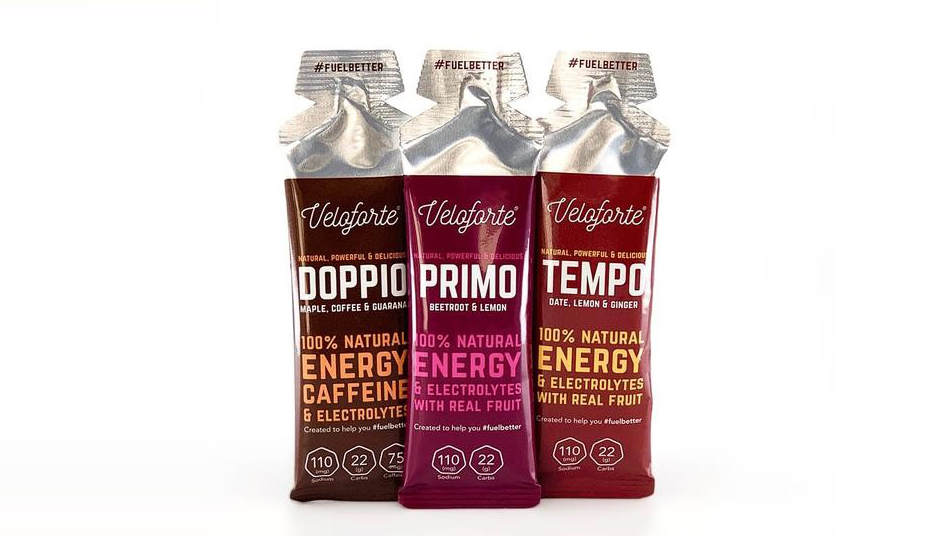
7. Veloforte Energy Gel
Specifications
Reasons to buy
Reasons to avoid
Most running gels are designed to provide fast-release carbohydrates in the simplest and cheapest manner possible, which tends to mean they use artificial ingredients. There’s nothing inherently wrong with that, but some people find them unpalatable and have stomach problems with standard gels, which might be resolved by switching to a more natural option like these gels from Veloforte. They’re highly portable thanks to their small size and the range of flavors is a little more adventurous, with beetroot, and lemon and ginger options. Despite the dainty 33g serving, they still pack in 22g of carbs.
Taste test: Having not checked the flavor before gulping the Primo gel down I was a little startled by the savory beetroot taste, but it’s not at all unpleasant. The Tempo gel will suit those who prefer a sweet offering, with the dates in it offset by lemon and ginger, while the Doppio gel, which also contains 75mg of caffeine, is my pick of the bunch with its maple and coffee flavor. Despite its compact size the consistency wasn’t too viscous either, though these are still best quaffed with a swig of water.
Best Gel With Caffeine
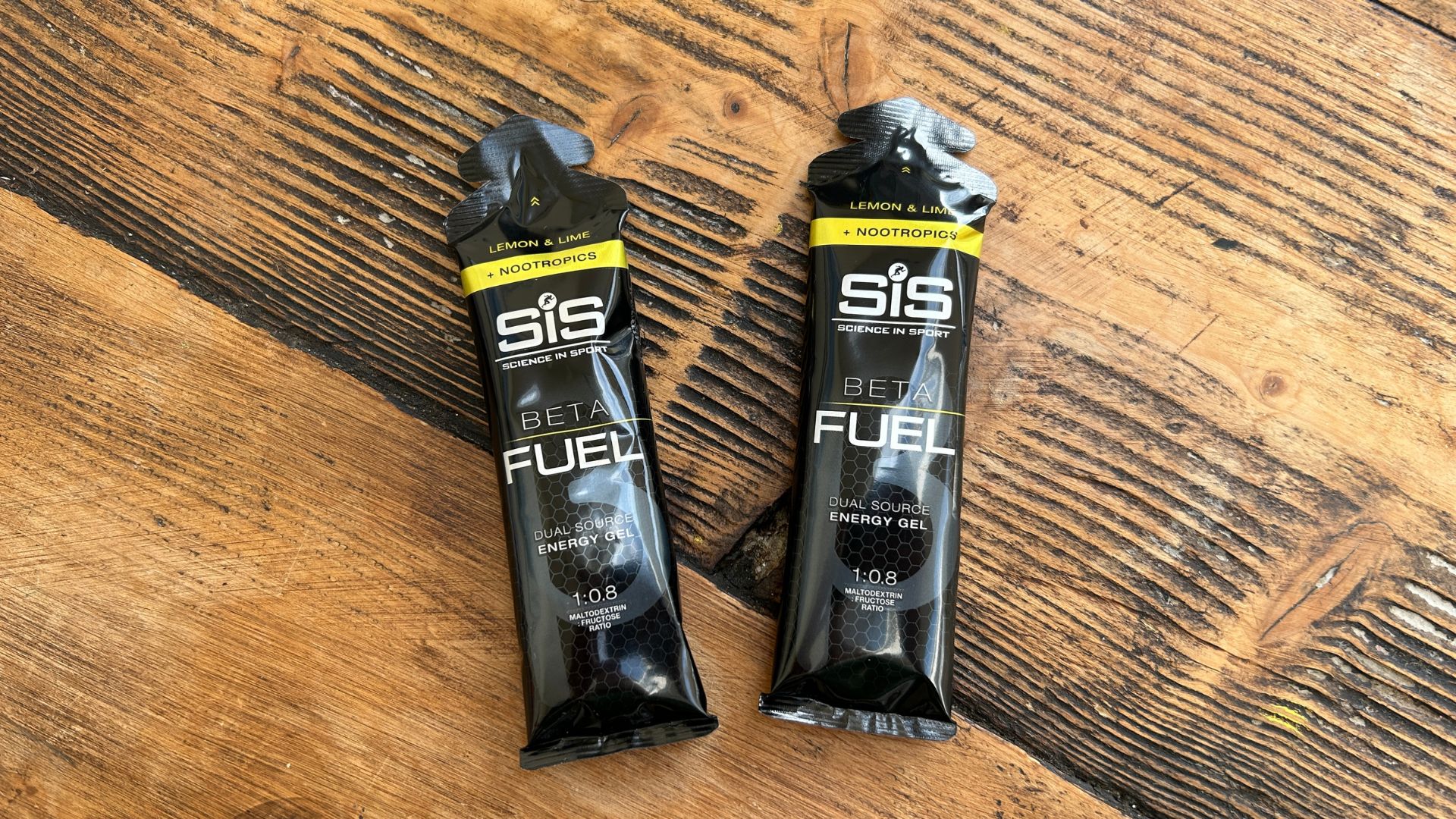
8. SiS Beta Fuel Nootropics
Specifications
Reasons to buy
Reasons to avoid
Caffeine is a proven performance-booster for endurance activities, helping to reduce your perception of fatigue, which makes it an ideal addition to running gels. Most brands have a caffeine gel in their line-up, but the SiS Beta Fuel Nootropics stands out to me because of the high caffeine content it delivers—at 200mg it has double the amount provided by many other gels.
Along with that caffeine you get 40mg of carbs, plus nootropics like taurine, theanine and citicoline, which can help to boost mental performance. It’s a potent mix that’s ideal for powering through your longest runs, but it is a gel that takes some getting used to, and I wouldn’t use too many of them in any one run because the caffeine content is so high.
Taste test: The lemon and lime flavor gel tastes good and it has a fairly fluid texture, so you can sip it easily over the course of several minutes to get the carbs and caffeine into your system gradually. There is also an apple flavor of the Nootropic gel.
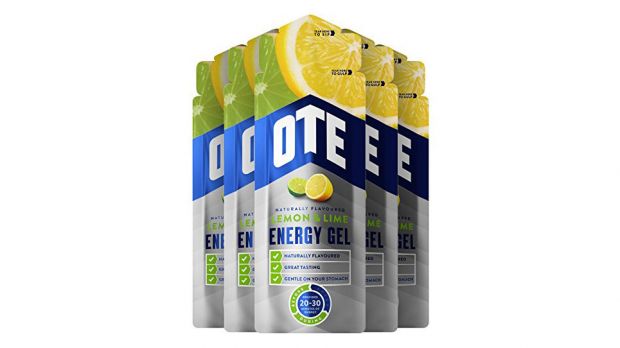
9. OTE Energy Gel
Specifications
Reasons to buy
Reasons to avoid
The Leeds brand that helps fuel the triathlon-running Brownlee brothers has come up with a canny idea: Two different tear points on the top of the packet. One creates a small hole you can sip the gel through, while the other makes a big hole for a quick gulp, so you can consume according to your preference at the time and minimize the risk of sticky spillage. The range of seven gels available contains two caffeinated options, and each gel provides 20g of carbohydrates.
Taste test: Although there isn’t a huge range of flavors—five in total: apple and orange energy gels, pineapple caffeine gel, blackcurrant, and lemon and lime, which are both available in caffeinated and non-caffeinated forms—OTE has done well to create a mix that isn’t at all sickly and slips down easily.
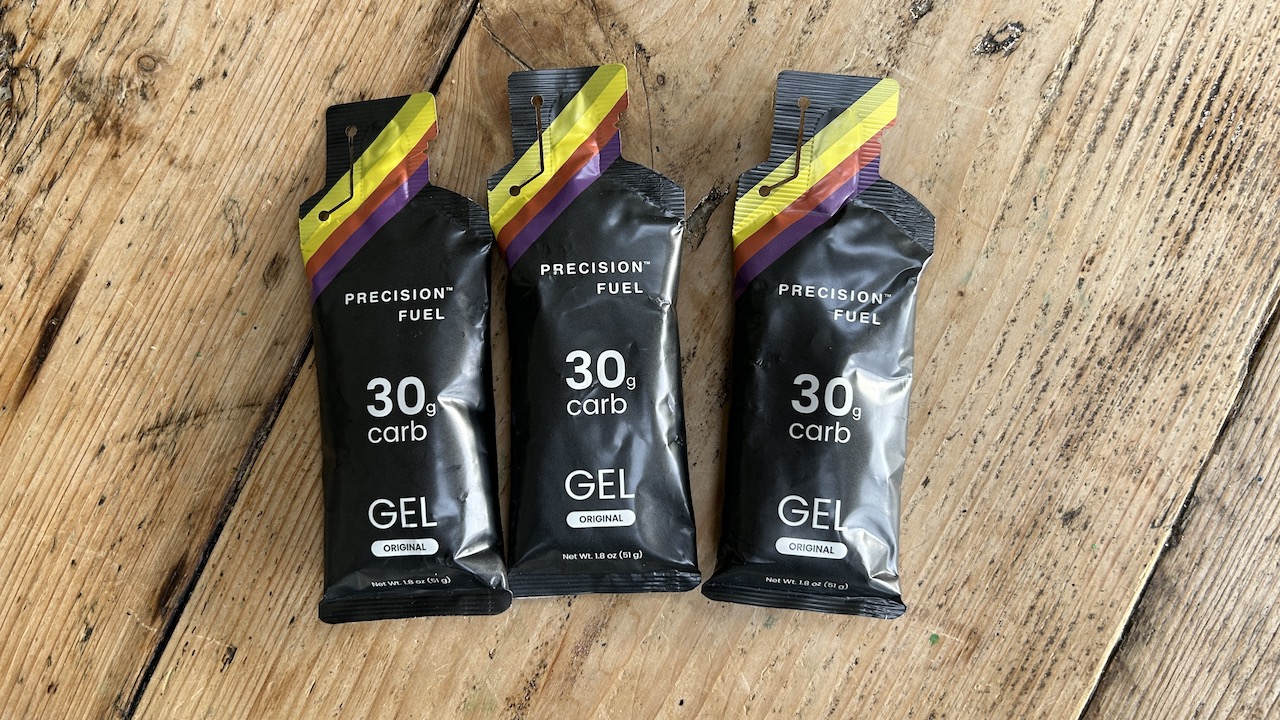
10. Precision Fuel PF30 Gel
Specifications
Reasons to buy
Reasons to avoid
These gels keep things simple. There’s only one flavor, which is so mild as to be essentially neutral, and it’s not hard to ascertain the amount of carbs they contain, with 30 in the name and “30g carb” in big letters on the front of the packaging. Those carbs come in a 2:1 ratio of glucose to fructose to make them easier to absorb. Precision Fuelling & Hydration also has a useful carb calculator on its website so you can work out how much you’ll need for your event. The gels are pleasingly small, making them one of the more efficient ways to carry 30g of carbs with you.
Taste test: The gels are slightly sweet and a little citrusy, but their predominant feature is that they don’t taste of anything much, which is fine by me. They are best taken with water, though in a pinch it’s possible to get them down without.
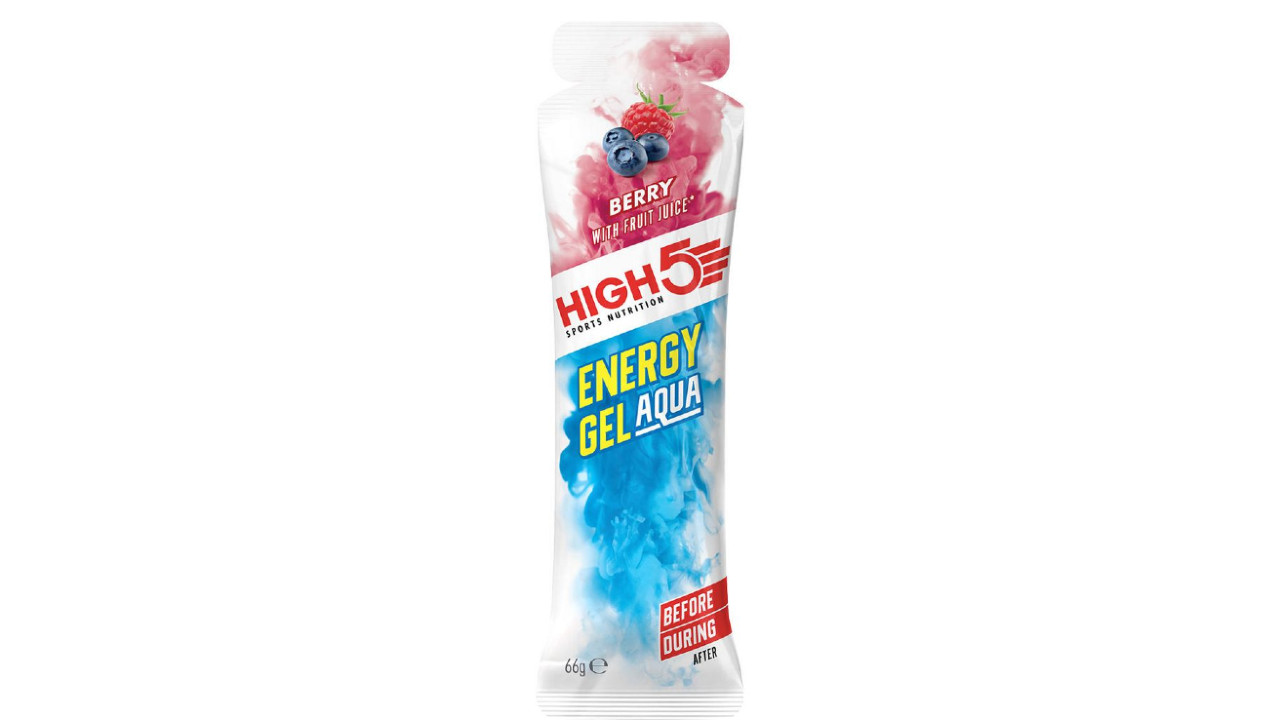
11. High5 Energy Gel Aqua
Specifications
Reasons to buy
Reasons to avoid
High5’s gel range covers all the bases: isotonic gels, straight-up energy gels and caffeinated gels, each containing 23g of carbs. The gels are even batch-tested to ensure you won’t accidentally fall foul of doping regulations, if that’s a concern for you.
Taste test: You have to hand it to High5—even its non-isotonic gels are pretty fluid and easy to consume, and none are so sugary that they make you wince. I found the isotonic gels, which go by the name Energy Gel Aqua, the tastiest: They’re more like a drink than a gel, making them very easy to get down while running.
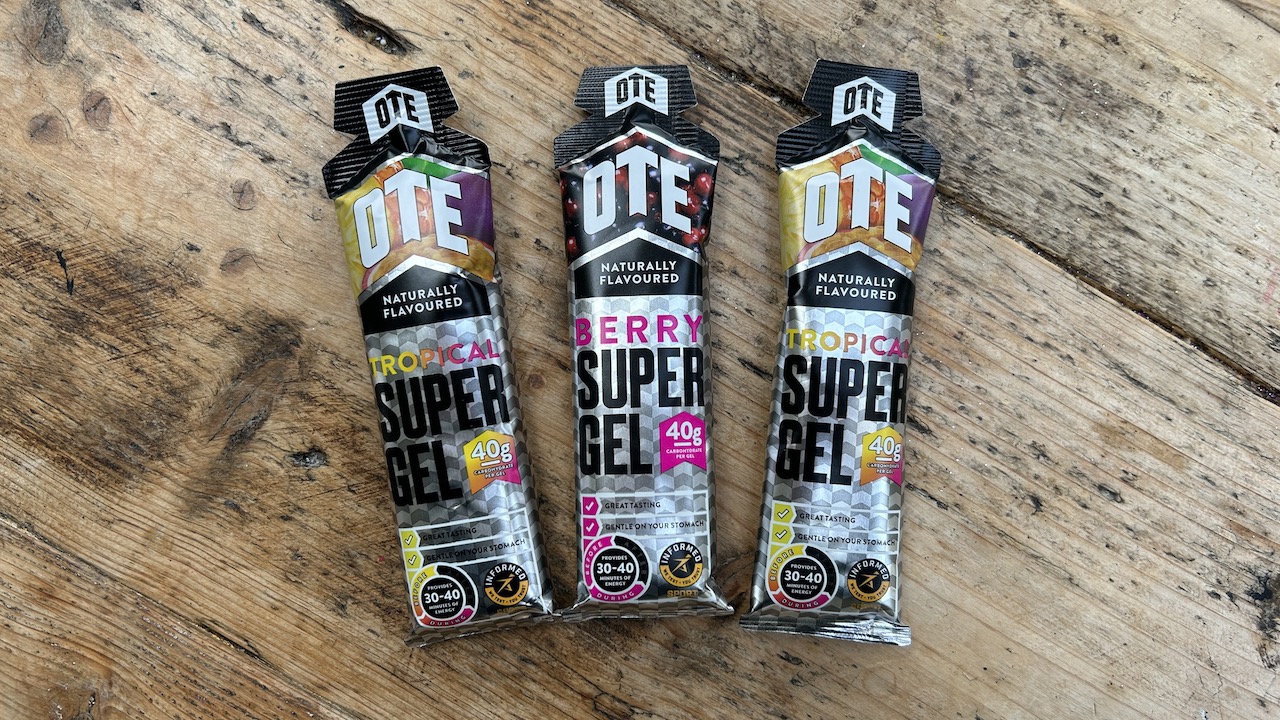
12. OTE Super Gel
Specifications
Reasons to buy
Reasons to avoid
OTE’s Super Gels double the carb count of its normal gels while keeping the pack size fairly small, making them a highly convenient way to carry a lot of fuel with you on long runs. The carbs come from a mix of maltodextrin and fructose for maximum-efficiency absorption, and the gels also contain magnesium and sodium to help you stay hydrated.
Taste test: Despite being so high in carbs, the gels aren’t too thick and I found that they slip down quite easily. It’s best to take them with water, though, and make sure you sip them slowly rather than downing the gel in one.
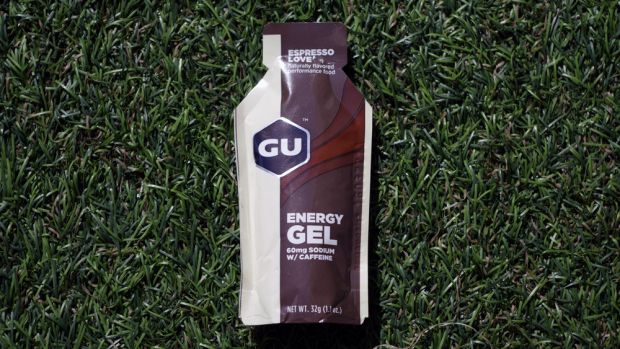
13. Gu Energy Gel
Specifications
Reasons to buy
Reasons to avoid
These tiny shots of gel that contain 22g of carbs are the best pick for those keen on minimizing the amount of weight they carry on the run. They are absolutely tiny, but also highly concentrated as a result, and this is one gel I’d definitely recommend testing extensively before any races to ensure your body can handle it.
Taste test: Gu stands out for the originality in its range of flavors, which includes the likes of Salted Watermelon and Chocolate Outrage. There are also caffeine-rich options available. However, the Gu gels are so sticky that it’s essentially impossible to get them down without water, so make sure you time them right on race day.
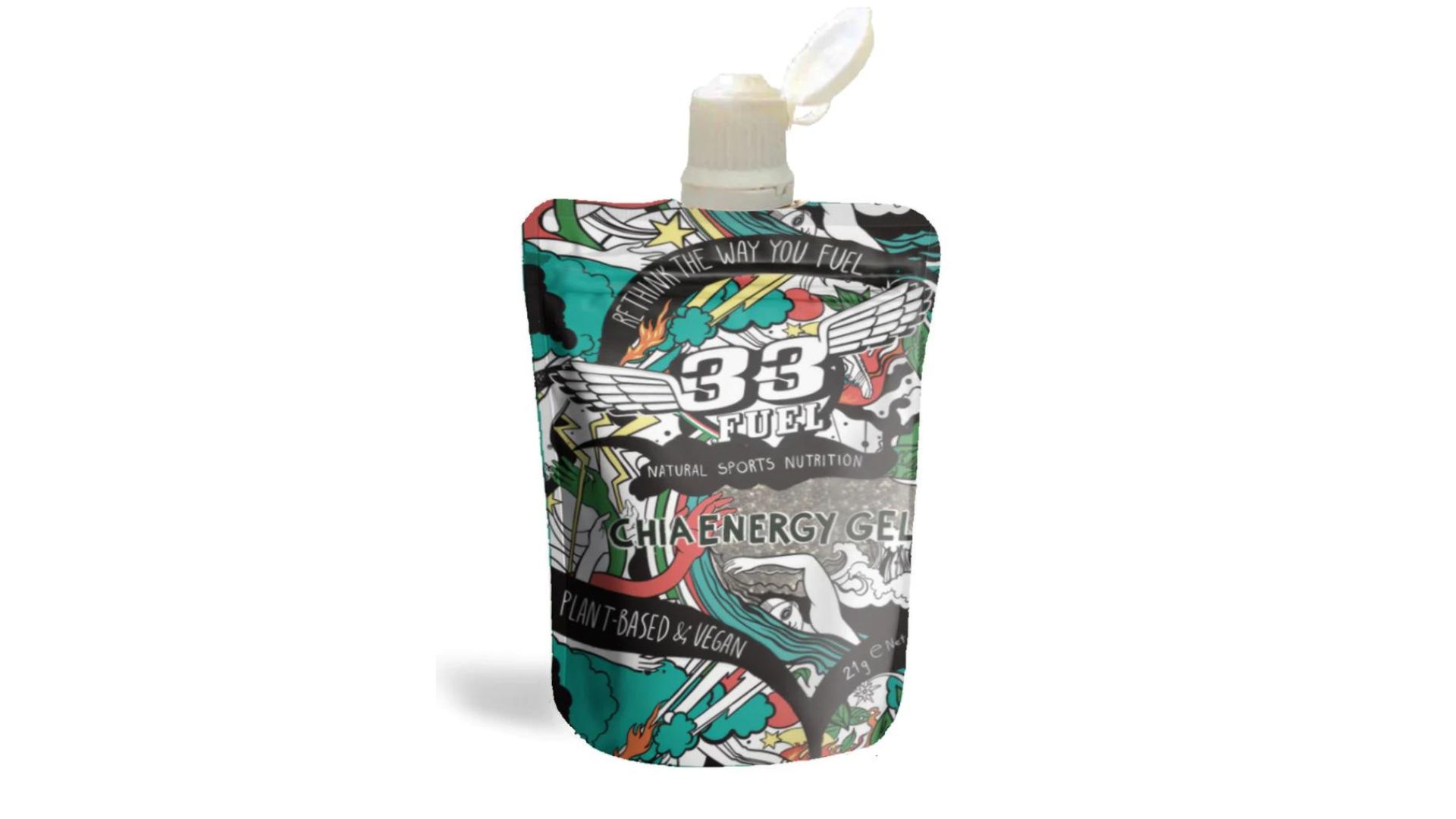
14. 33Fuel Chia Energy Gel
Specifications
Reasons to buy
Reasons to avoid
These all-natural gels offer something completely different from everything else on this list. They come as a dry powder that you mix with water, or coffee/juice/whatever else you have to hand. You wait 10 minutes and then suck down the gel. It’s not quite as inconvenient as it sounds and can be made mid-run, although when it comes to races it’s more suited to ultra-distance events where you have a backpack to carry it.
It’s designed to be a stable release of energy rather than the usual spike you get from a gel. The gel contains only 11g of carbs compared with the usual 20g, but I’ve found the energy benefits seem to be similar, and it’s more palatable than most options—great news if you’re not a fan of the usual super-sweet gels.
Taste test: The texture of the gel is unusual, with an almost porridge-like consistency plus crunchy chia seeds that add even more texture, and the vanilla flavor is mild but pleasant. It’s not one I’d use for an all-out marathon myself, but for longer, slightly slower events it’s a welcome alternative to very syrupy gels.
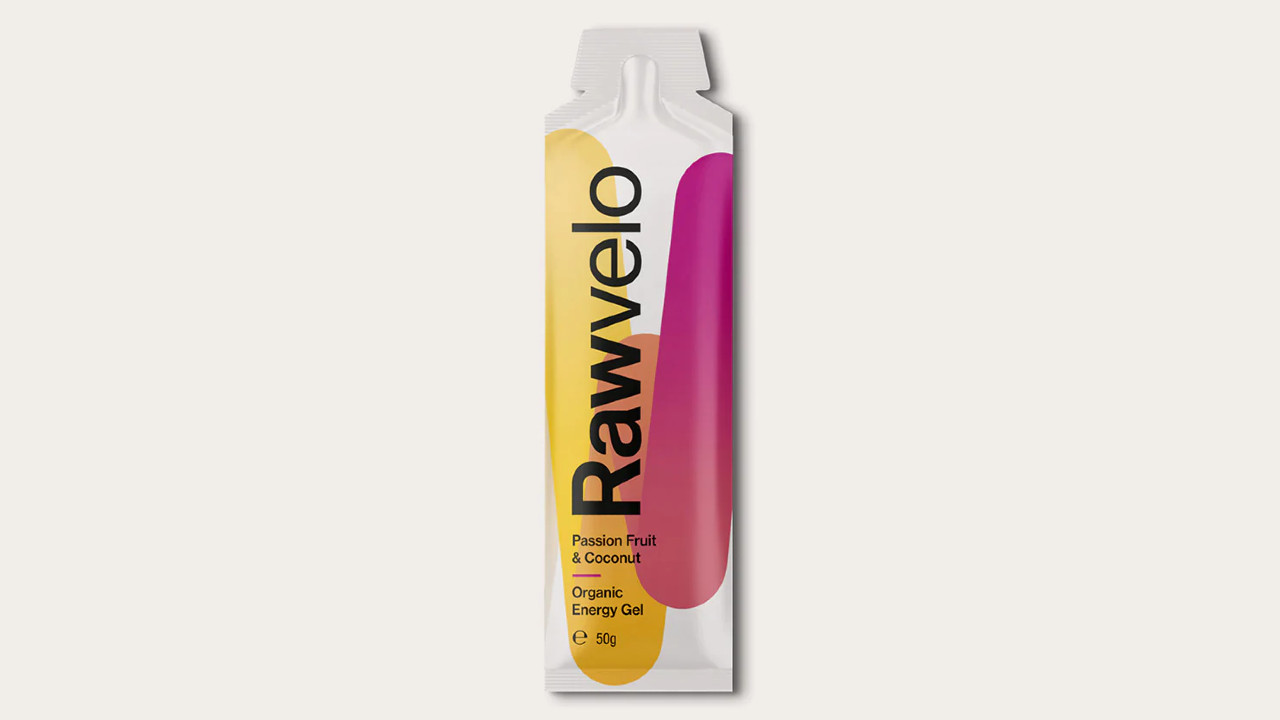
15. Rawvelo Energy Gel
Specifications
Reasons to buy
Reasons to avoid
They might have “velo” in the name, but I can assure you the energy gels from this company work just as well for runners. There are three gels in Rawvelo’s range, two without caffeine—blood orange, and passionfruit and coconut—and a blueberry and hibiscus gel that contains 50mg of caffeine. All the gels are made from natural, organic ingredients, delivering 20g of carbs via rice syrup and fruit juices.
Taste test: The Rawvelo gels slip down easily. The flavors are a little less dramatic than they sound but still very tasty and different from the norm—aside from blood orange, which just tastes of orange.
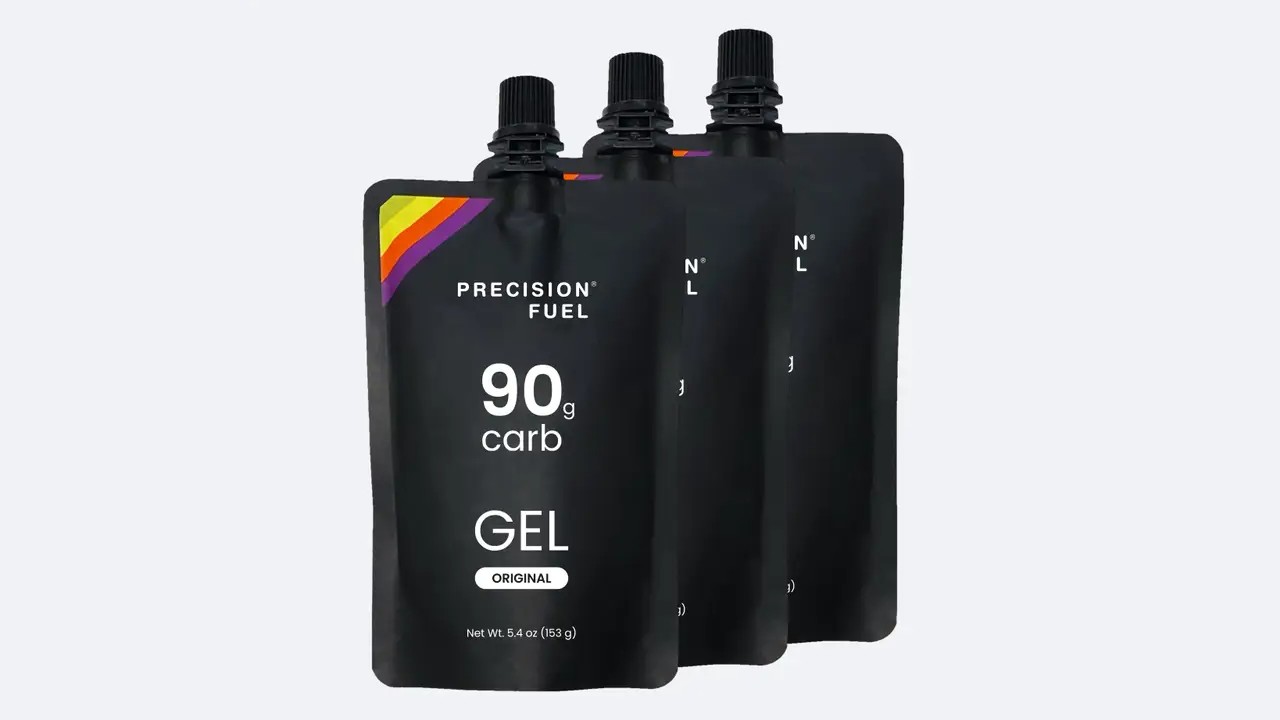
16. Precision PF90 Gel
Specifications
Reasons to buy
Reasons to avoid
When tackling long events like a marathon, many people aim to consume around 60g-90g of carbs every hour to ensure they don’t run out of fuel. That quickly adds up to a whole lot of 20g-30g gels that you have to carry if you’re running or cycling for several hours, and carrying this 90g pouch of Precision Fuel & Hydration’s gel can be a more efficient approach. You can sip on the gel aiming to finish it over a period of time in line with your fuelling targets, and reseal it with the twist lid between sips. It’s also a good option for ultramarathons and Ironman events because you can reseal it.
Taste test: The gel has a neutral, slightly citrusy flavor and a fairly fluid texture that means it is possible to take it without water, but usually it’s best to wash it down.
Running Gels Explained
Why do people use running gels?
It hardly needs saying that running for a couple of hours or more requires a lot of energy, and the main source of muscle fuel over the course of a long event is carbohydrates, which your body stores as glycogen. Your body can store about 90 minutes’ worth of glycogen if you stock up via pre-race carb-loading, but after that you face the risk of running out so you need to take on some extra fuel during the race.
There are many ways to do this. Sports drinks, energy bars and dried fruit are all options, but many people find that the best method of refuelling is using energy gels. These generally contain 20-30mg of carbs, are easy to slip into a running belt and can be consumed quickly without breaking your stride.
What kinds of gel are there?
All energy gels have the same purpose, to help fuel your run, and while they come in different shapes and sizes, there are two main types: isotonic gels and energy gels.
Isotonic gels come pre-mixed with water, which means not only that they’re more fluid and easier to take on the go, but also that you don’t have to worry about carrying water or eating the gels near a water stop during a race. The downside of this is that they’re a little bulkier.
Energy gels, on the other hand, just pack in a load of carbs. This type might be stickier – some of them are tough to get down without water – but you can pack more into a small race belt and reduce the weight of what you have to carry. The trade-off is timing them around water stations in races, or having to carry water with you on long training runs.
Both of these kinds of gels also have options that contain caffeine too, for a little extra mental boost, which can be very welcome in the latter stages of a marathon.
How many will you need for a race?
The first thing to know about gels is that if you wait until you feel your energy levels dropping before you take one, it’s already too late. You need to maintain a steady stream of energy, starting well before your reserves run dry.
How many you should take during a race will depend on your experience and the intensity you’re running at. If you’re an elite or a hardened amateur used to chugging down gels and going flat-out for a PR, you might aim for 60-90g of carbs per hour during long activities. But that’s a lot of gels.
A more common strategy is to aim for 30-60g of carbs per hour, which provides sufficient fuel for most runners and will be easier for your stomach to absorb. Remember the amount of gels you take will be governed by how practiced you are with them and how well your stomach copes with them, as much as by your carb targets.
Many gels contain 20-25g of carbohydrates, so if you’re aiming for 30-60g of carbs, taking one every 20-30 minutes starting from the 30-minute mark is a solid strategy. If you’re aiming to hit higher carb numbers then using high-carb gels that contain 40g of carbs will help limit the amount you have to carry.
Fortunately, the gels you bring with you won’t be the only carbs available. Almost all marathons have stands where you can grab a carb-rich sports drink and some even hand out gels. For example, at the London Marathon you pass two Lucozade Sport gel pick-up points en route, so that’s two fewer you need to carry yourself.
Make sure to test your gels before race day, including the type you plan on grabbing on the course. Different people react differently to each product, so you need to make sure your stomach can handle the type you choose and the frequency with which you take them. And while swigging water to wash down a gel generally makes them easier to take, don’t use a sports drink for this purpose—you’re just asking for an unpleasant sugar overload that your stomach won’t welcome.
Q&A
Do energy gels work?
Yes. Energy gels deliver a hit of carbohydrates that are easily absorbed, and they’re just what your body needs to fuel hard exercise.
When should you use running gels?
Gels are best used just before you start running or during longer runs to ensure your body has enough carbs to fuel your exercise.
How often should you use running gels?
During long bouts of exercise such as a marathon, it’s advisable to consume around 60-90g of carbs per hour, which would typically be two to five gels, one taken every 15-20 minutes or so. In practical terms this can be a bit too much to carry and consume, so many runners aim to take a gel every 30-40 minutes or so, starting from about 30-45 minutes into their run.
Do pro marathon runners use gels?
Elite marathoners do use gels, but because they have dedicated drink stations where they can take on their preferred pre-mixed carbohydrate drinks without having to carry them, the bulk of their fuelling during a race is often done through drinks. Energy drinks are easier to absorb on the run than gels and often contain more carbs per serving, but it is hard for amateurs to carry drinks with them because they are much bulkier and heavier than gels.
Do you need gels for a 10K?
Most runners will complete a 10K in under 75 minutes, and if you have fuelled well in the days before the race you will have enough carbs stored in your body to get through a 10K without needing to use a gel. That said, many runners like to use a gel just before a 10K to top up their fuel stores, and if you are taking over an hour to complete the race and want to use a gel halfway through, it’s not going to hurt, even if it might only provide psychological benefits.
Are running gels good for you?
Running gels are not “bad” for you per se, but they are designed to be used before or during long bouts of intense exercises – they’re not meant to be eaten at other times. Gels contain a lot of sugar and you need to make sure you’re doing the running to merit their use and burn through those carbs. They can be a little sickly and lots of runners experience gastrointestinal distress when first using gels, so you need to train your gut to tolerate the sugary hit they deliver.
How do you get used to energy gels?
Many runners struggle with energy gels, so it’s important to train with them. We spoke to David Dunne, a performance nutritionist and the co-founder of tailored sports nutrition app Hexis, about sports supplements. He talked us through the best approach to training your gut to handle energy gels.
“The biggest thing with taking on carbohydrates during exercise is to have a plan,” says Dunne. “Know what volume of carbohydrate you need to have, and then know over what time period you should be distributing it.
“When you work out what the ideal scenario is, you’ve got to train your gut. If you decide you need to consume 60g of carbohydrate per hour and you’re not used to taking gels, you’re in for a world of pain. Over a three-, four- or five-week period, start with half a gel, then a bit more and so on, and train yourself to that ideal strategy.
“People are good at having enough gels at a race, but their guts just aren’t used to tolerating that much. We do need to expose our stomachs to it and practise how we fuel. Not every session is going to need that high volume of fuelling, but you might have one key session during the week where you use those race fuelling patterns.”
What’s the best gel for sensitive stomachs?
The right answer to this is the gel you’ve practiced with and found works for you, because what will upset your stomach during a run varies from person to person. I personally have found Maurten’s gels upset my stomach less, which might be down to the hydrogel used because it passes through the stomach more easily. They are worth trying if you’ve struggled with many other gels.
Some people prefer all-natural gels and find they upset their stomach less, while others are happy with any old gel thanks to their iron constitution. Try a few gels and then pick one to use for several training runs. Also don’t gulp down your gels during runs—sip them slowly to introduce the sugary carbs to your stomach gradually.
What’s the best way to carry running gels with you?
Running gels are small and easy to bring with you on the run in a variety of ways. I prefer stashing them in a shorts pocket—see my selection of the best running shorts with storage. Drop-in pockets on the side of the leg or long pockets that run around the waistband are both great places to stash gels.
You can also get a running belt to wear over your favorite running kit. These can be lightweight with just enough room to carry one or two gels, or capacious strips with pockets that run all the way around your body so you can stow five to 10 gels easily. It’s important that you are able to tighten your shorts or belt against your body so the gels don’t bounce around too much. With shorts you can do this using the drawstring, and the best belts have a toggle you can pull tight quickly.
If you’re looking to really load up on gels and other items you can use a running backpack, or a lighter weight running vest or hydration pack with pockets. When using them to store gels I’d look for a pack with pockets on the front of the straps, so you can easily access the gels while running, rather than having to take the pack off to access the main pockets.
One other option to consider if you want to wear the most lightweight, pocket-free kit possible is to use a safety pin to attach the gels to your shorts or another bit of kit. You can also tuck gels into your shorts or a running bra, though be wary of causing chafing when doing this if the gel is sitting against your skin.
More About Running Supplements
- What should you eat before a run? Find out what and when to eat before high-intensity, race pace and recovery runs – as well as races
- Why Maurten's running supplements, used by Eliud Kipchoge and Mo Farah, are a different kind of rocket fuel for your running, whatever your level
- All the info on marathon running supplements: gels, tabs, beetroot juice and anything else that can make running 42.2km easier
- When you’re training hard, water alone just won’t cut it, these are the best hydration tablets for running
Sign up for workout ideas, training advice, reviews of the latest gear and more.

Nick Harris-Fry is a journalist who has been covering health and fitness since 2015. Nick is an avid runner, covering 70-110km a week, which gives him ample opportunity to test a wide range of running shoes and running gear. He is also the chief tester for fitness trackers and running watches, treadmills and exercise bikes, and workout headphones.
